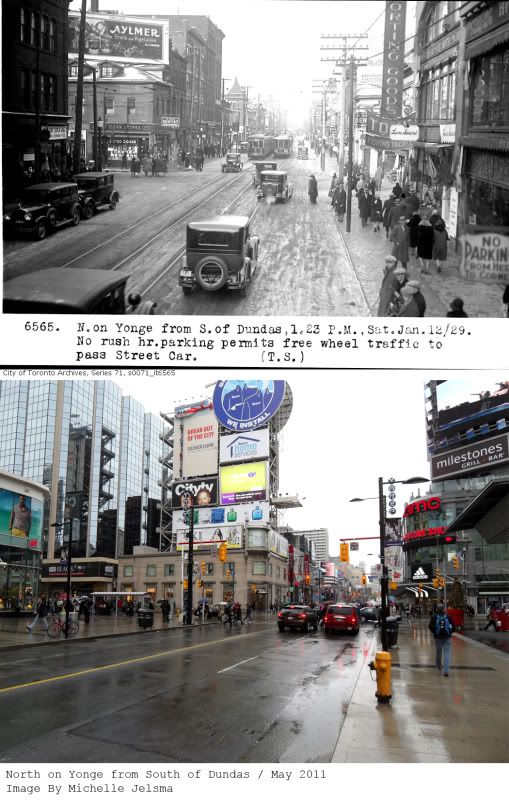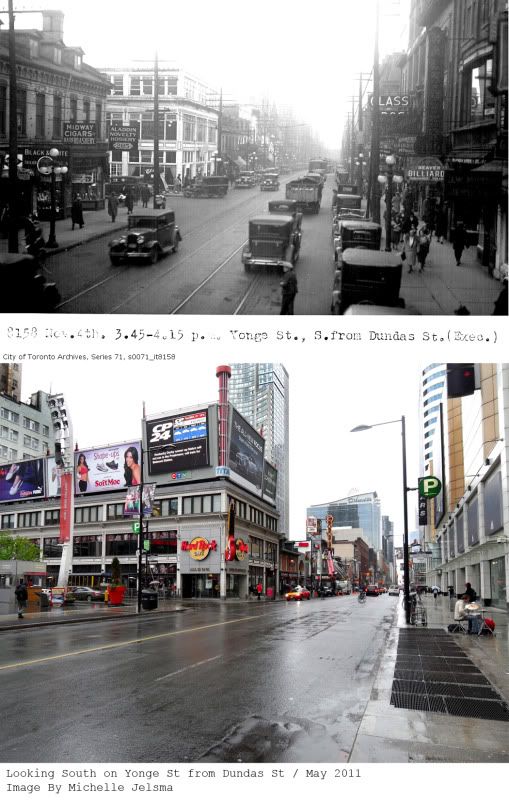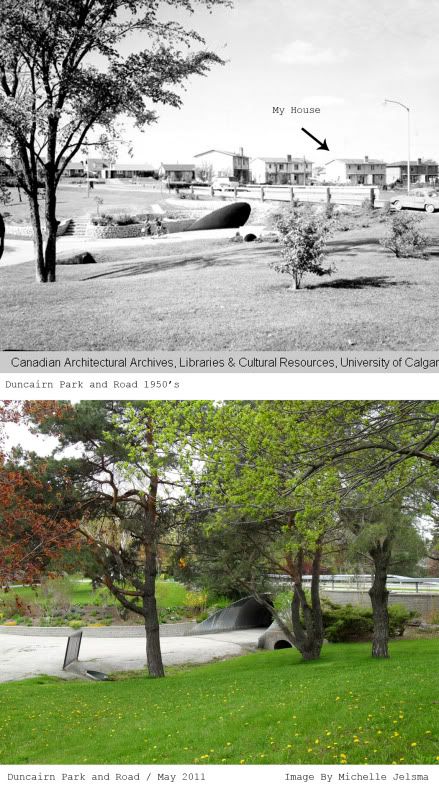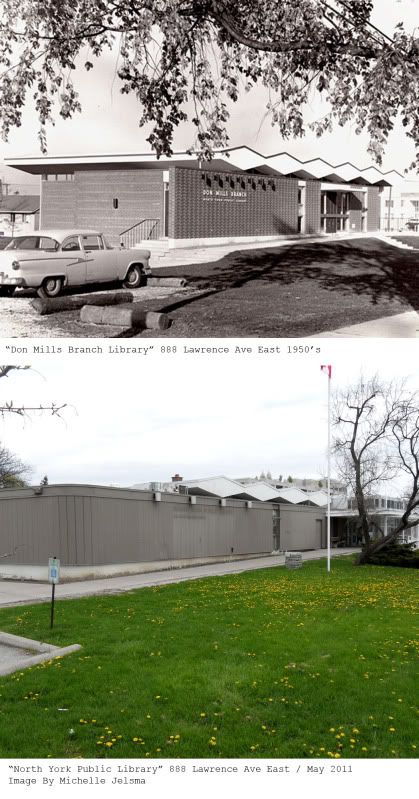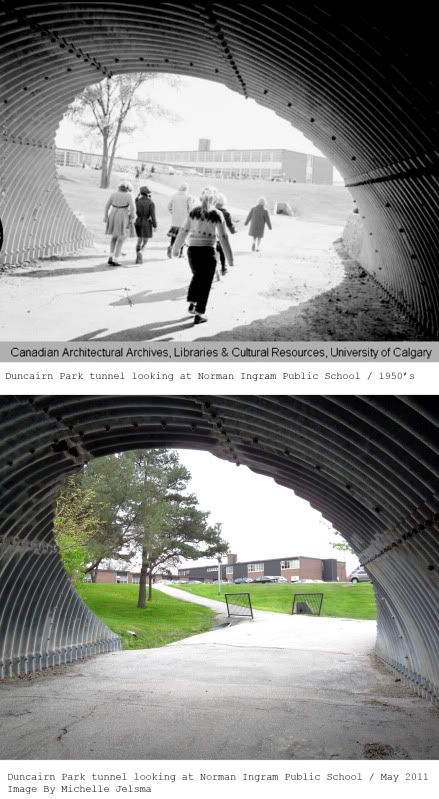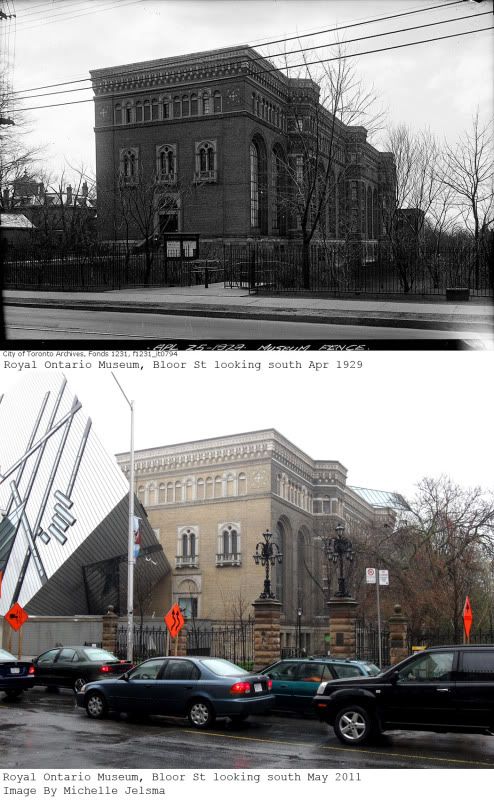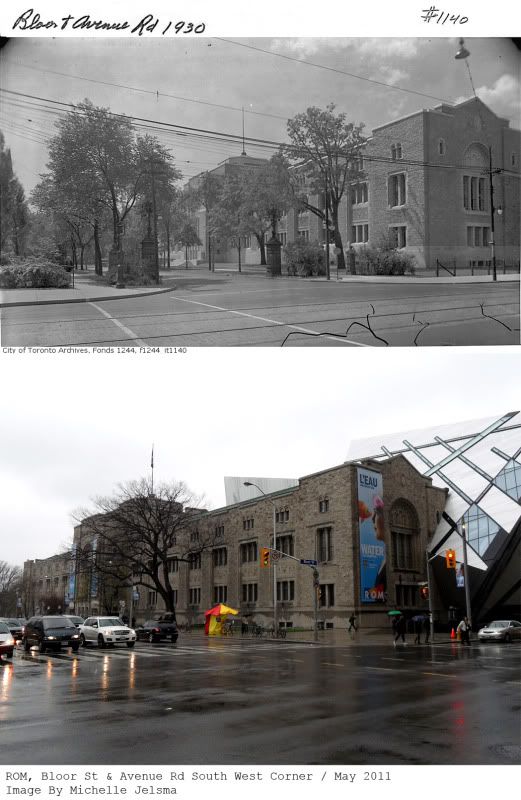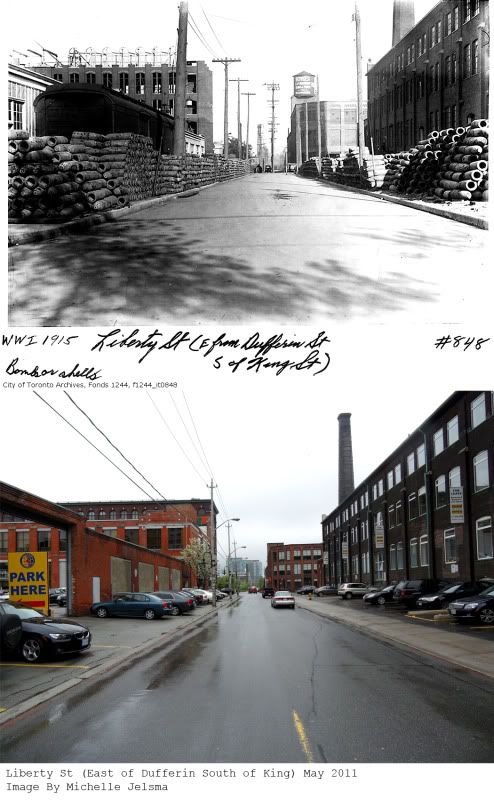
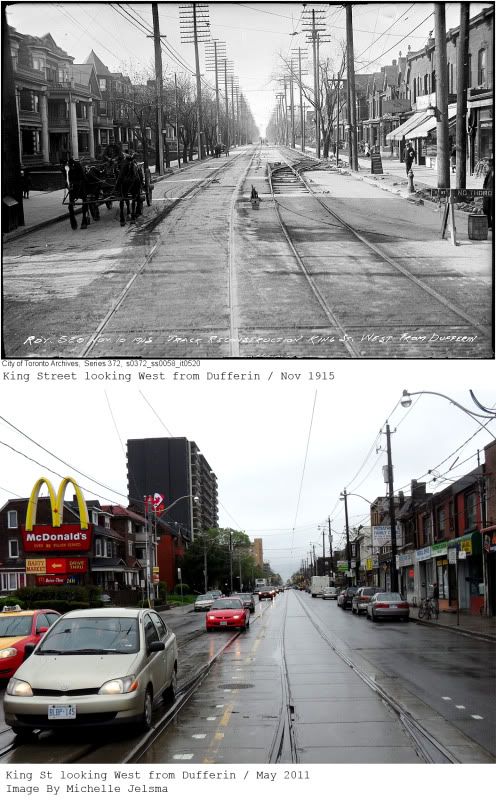
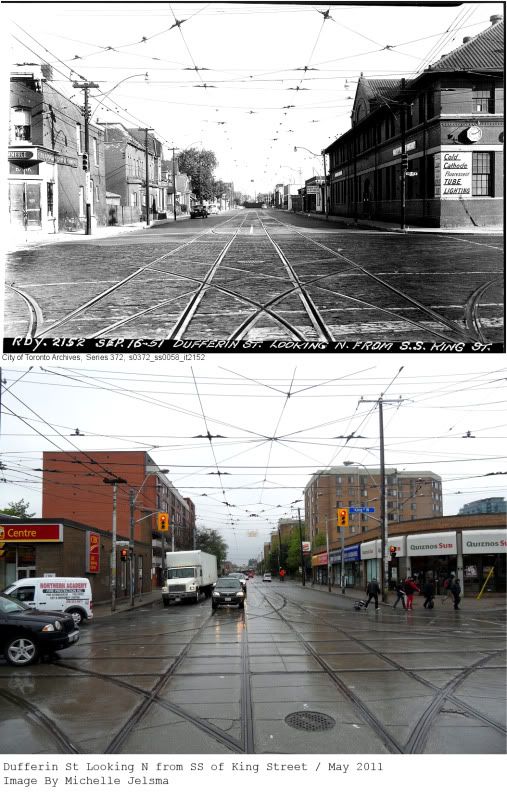
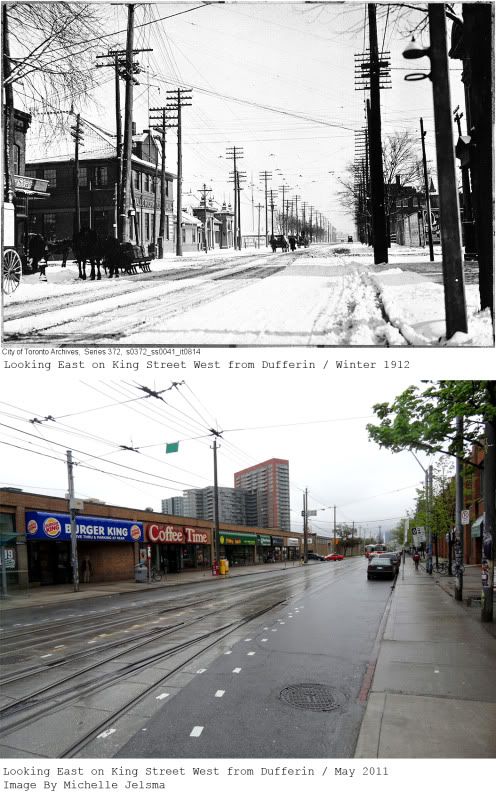
Last week I had a job interview in the west end near Dufferin and King, where Liberty Village meets Parkdale. So I located a few interesting images off the Toronto Archive website for today’s blog post. In the past Liberty Village was known to have two things, manufacturing plants and prisons. Now? Condos and office buildings. Dufferin Street was named after Frederick Hamilton-Temple-Blackwood who was Lord Dufferin and King Street was named after King George III. I discovered that the south east corner of Dufferin and King was a Toronto nursery; there was a huge garden there for over 40 years. (See image below)
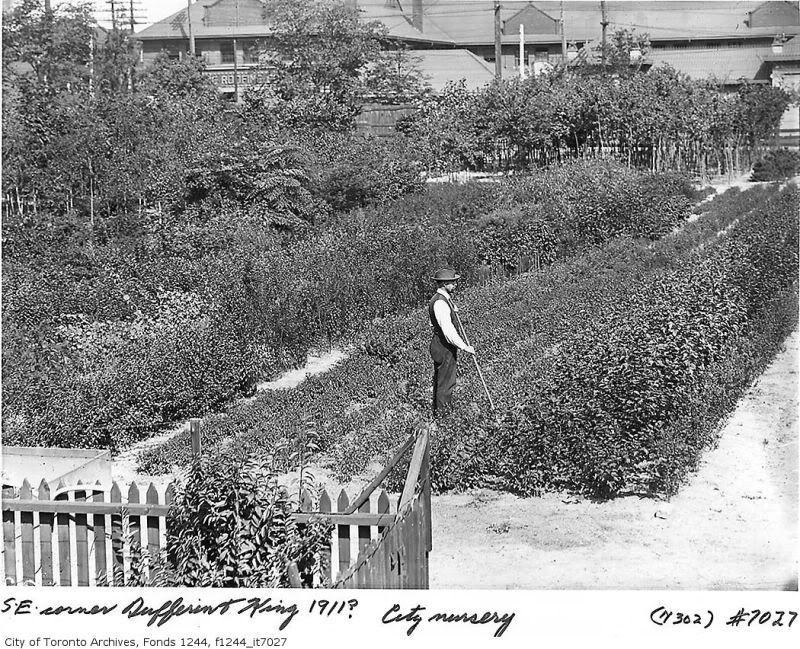
The first image series is one of my favorites, check out what is on Liberty Street… Bombs!!! Perhaps just bomb casings (I have never seen a real bomb so I can’t be sure). There was an artillery manufacturing plant on Liberty Street (which is located one block south on Dufferin) and I find it interesting that people now use that space to park their cars. You can see the Toronto Carpet Factory is being built in the background. That structure is beautiful, as are others in the neighbourhood.
For my readers who live in Parkdale you can see what it looked like before the area became apartment dominated. It is nice to see that a few of the original houses remain. Also interesting to discover that the CIBC on the North West corner has been such for at least 60 years.
